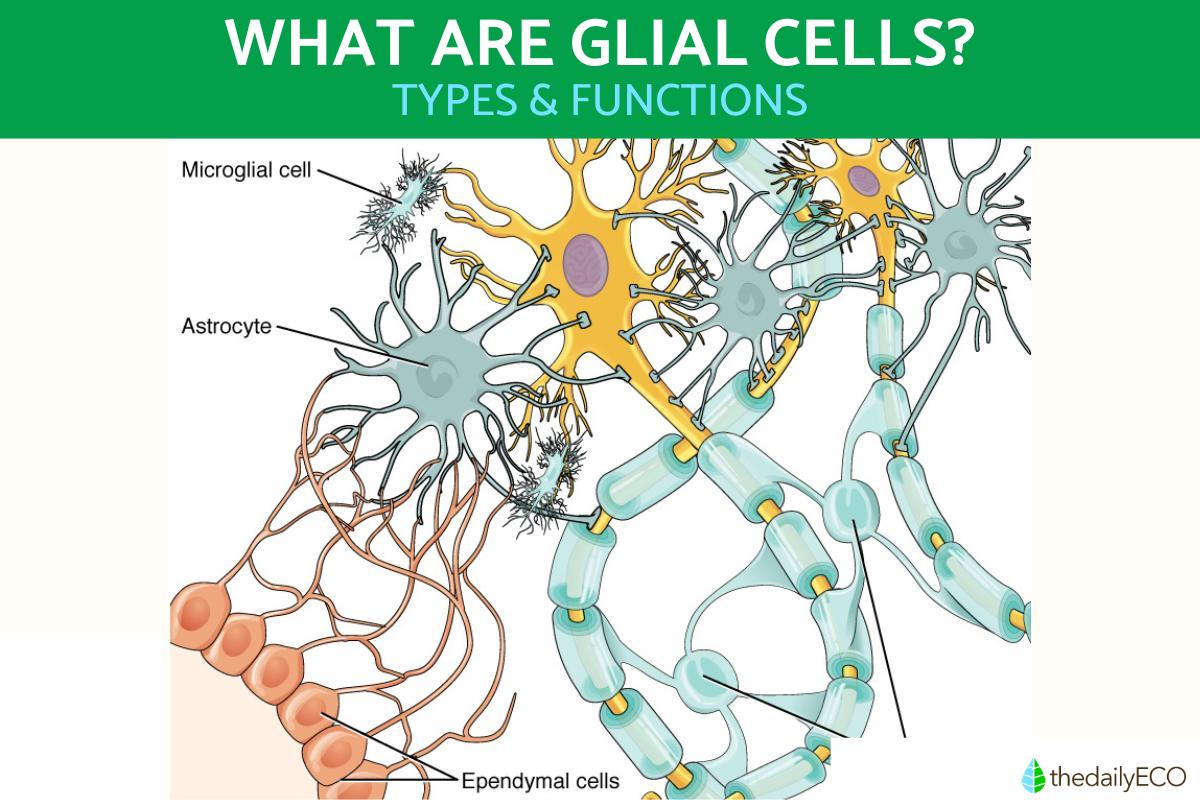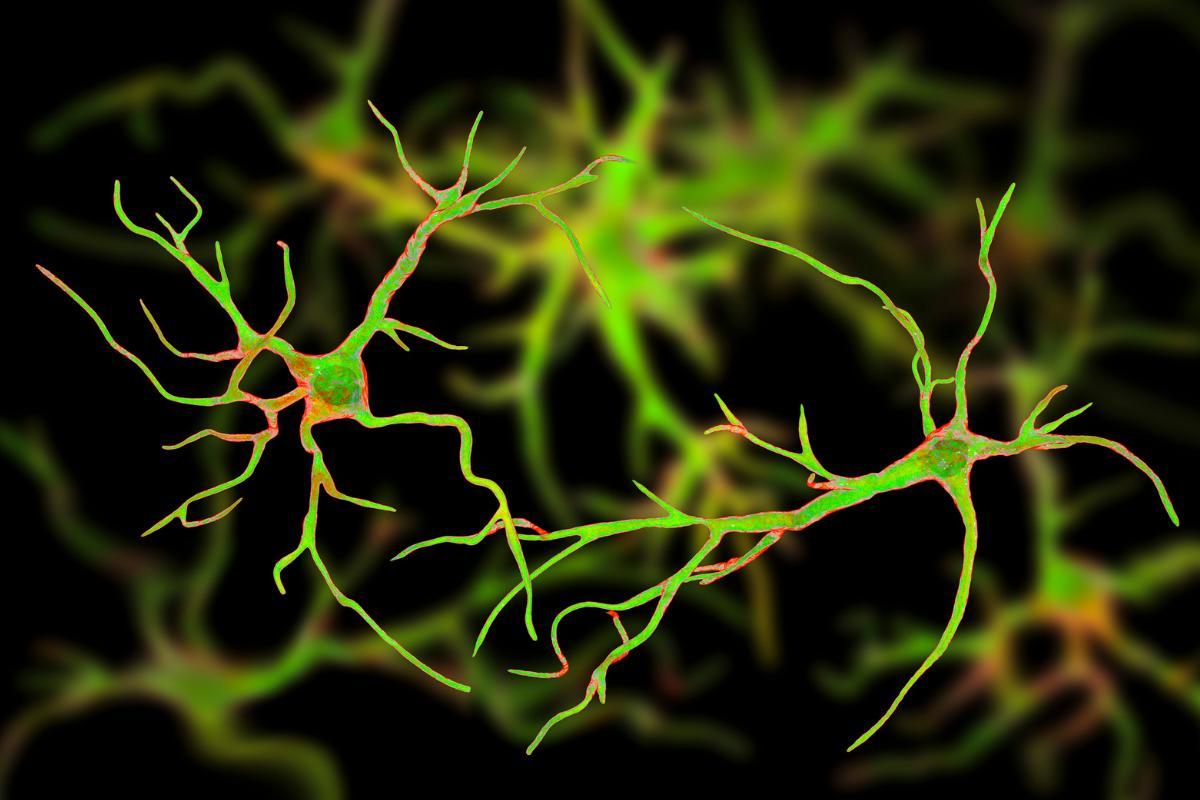What Are Glial Cells and Their Function?


Glial cells are structural, metabolic and trophic support cells for neurons. They are found in both the central nervous system and in the peripheral nervous system. For any function in an organism to be carried out, specialized cells are required. Despite being part of the central nervous system, glial cells are not neuronal and do not use electrical impulse to function. They arre vital for the functioning of the body and there are different types with their own specialized roles. We learn more at thedailyECO by asking what are glial cells and their function?
What are glial cells?
Like neurons, glial cells actively participate in the functions of the nervous system. They are also known as gliocytes or neuroglia. These neuroglial cells are supportive to neurons, the latter being the cells responsible for transmitting the information between the brain and the rest of the body. In other words, neurons are the main cells of the central nervous system, while glial cells are the support cells for neurons. In this way, their role is secondary.
Glial cells are found mainly in the brain, specifically in the encephalon. They are also found in all nervous tissue, including the peripheral nerves that exist throughout the human body.

Characteristics of glial cells
Glial cells are smaller and more numerous than neuronal cells. They are not capable of propagating action potentials. Action potentials are changes that occur in the membrane potential and multiply on the surface of excitable cells, especially those of the nervous system. They also multiply in other cells, such as cells necessary for egg fertilization.
Glial cell function
Recent research into the communication between glial cells and neurons has yielded surprising results. It was previously believed that the former were mere spectators and assistants to the work of neurons, but today it is known that they are related to more processes. These are:
- Myelination
- Synaptogenesis
- Migration, proliferation and differentiation of neuronal precursors
There are different types of glial cells, each with their own particular function. We look at each glial cell in more detail below, providing information on their structure and function.
While this article looks specifically at what are glia cells, you can learn more about all the different types of cells in our related guide.

Types of glial cells
There are eight types of glial cells. Five of these neuroglia are found in the central nervous system, i.e. in the brain, cerebellum, brain stem and spinal cord. Each type of central glia has their own function to differentiate them from the others. They are the:
- Microglia: microglia function is associated with macrophages of the immune system. They act as detoxifying agents by eliminating dead cells, toxic waste and other types of waste. It is present in both vertebrate and invertebrate organisms. They protect the body against external aggressions such as viruses and bacteria. They also protect against diseases such as cancer by acting as a shield within the nervous system. It functions similar to an immune cell. By behaving in this way, it tries to minimize or end the threats of disease. As their name suggests, they are tiny cells and the smallest types of neuroglial cell.
- Interlaminar glia: this type of glial cell incorporates a cell type typical of the cerebral cortex, able to control synaptic activity. They do so via controlling levels of neurotransmitters. They are unlike any other type of glial cell, being unlike to humans and other primates.
- Ependymal cells: they have the function of lining the fluid-filled spaces of the brain, cerebrum and spinal cord. It is also known as ependymocytes.
- Astrocytes: are the most numerous group in the brain. They get their name because they are star-shaped. Astrocytes have different types and their function changes according to each type, is their function. In general, they maintain stable communication between neurons when synapses occur, help regulate blood flow to the cerebellum and balances the fluid that surrounds the neurons. Astrocytes help neurons get where they need to go. In addition, they contribute to the construction of the blood-brain barrier, helping confine substances to the cerebellum that enter the blood and that could be exponentially dangerous or toxic.
- Oligodendrocytes: in addition to myelinating axons, they act as an electrical insulator, allowing the transmission of nerve impulses to be faster and more efficient.
The peripheral glia are those found in the peripheral nervous system, i.e. the nervous ganglia, nerves and nerve endings. These types of glial cells are the following:
- Schwann cells: constitute the glia of the peripheral nervous system. They support the axons in said system. They are vital cells in the reconstruction of damaged tissues, as well as in the healing of various diseases. It has been demonstrated in laboratory experiments that the culture of Schwann cells is very useful for processes such as myelination, demyelination, post-traumatic regeneration and response to infectious agents. Schwann cells form an envelope layer around the axons of the peripheral nervous system, with an extensive layer of myelin. They also have the function of separating and isolating nerve cells. There are some diseases that affect Schwann cells, such as multiple sclerosis and diffuse sclerosis. Both diseases are demyelizing and consequently affect the axon. When the conduction and communication of the nerves is interrupted, great pain is caused, as well as loss of strength and sensitivity.
- Capsular or satellite cells: they are very small cells that can surround the soma or body of neurons, as well as the axons and dendrites of the spinal, cranial and visceral ganglia. They creating a sort of capsule to protect these elements, hence their name.
- Müller cells: provide physical support and trophic factors to neurons. They are located in the retina. Their function is to maintain the structural and functional stability of retinal cells. It should be remembered that most of the cells in the retina are neurons.
Now that you know what glial cells are, you may be interested in knowing more about how every cell functions with our article explaining what are organelles and their function?
If you want to read similar articles to What Are Glial Cells and Their Function?, we recommend you visit our Biology category.
- Duque Parra, J. E. (2023). Glial cells an integrative vision: From histological foundations to their clinical application. Colombia: Universidad de Caldas Publishing Label.
- Glial Cells in Health and Disease of the CNS. (2016). Germany: Springer International Publishing.







